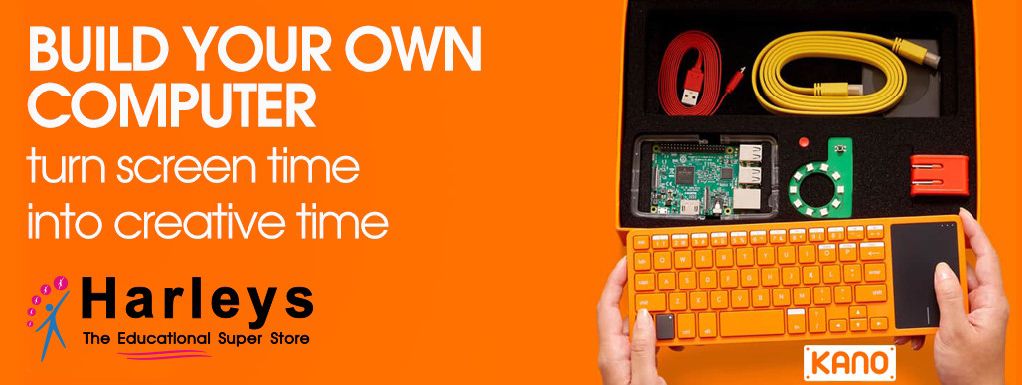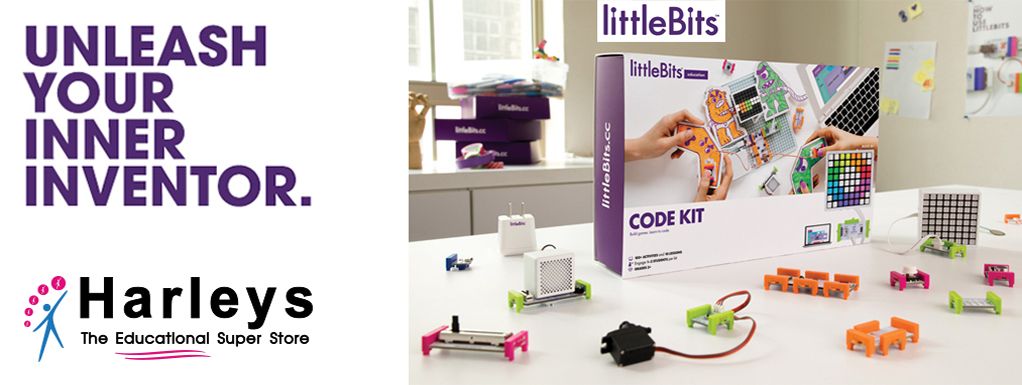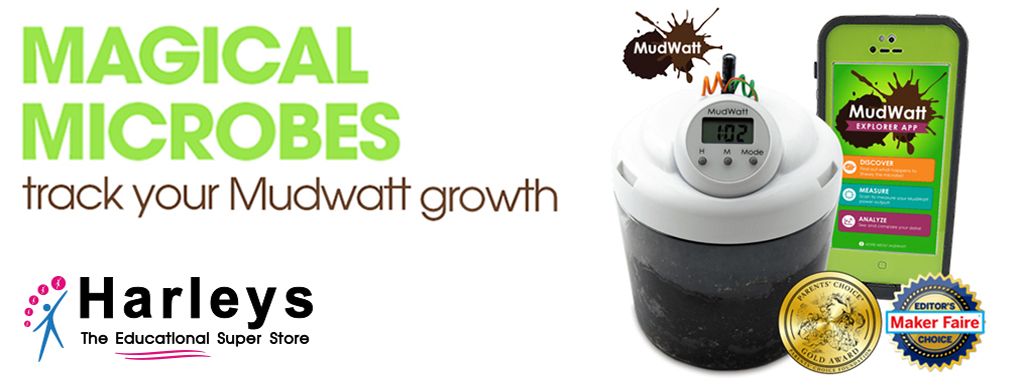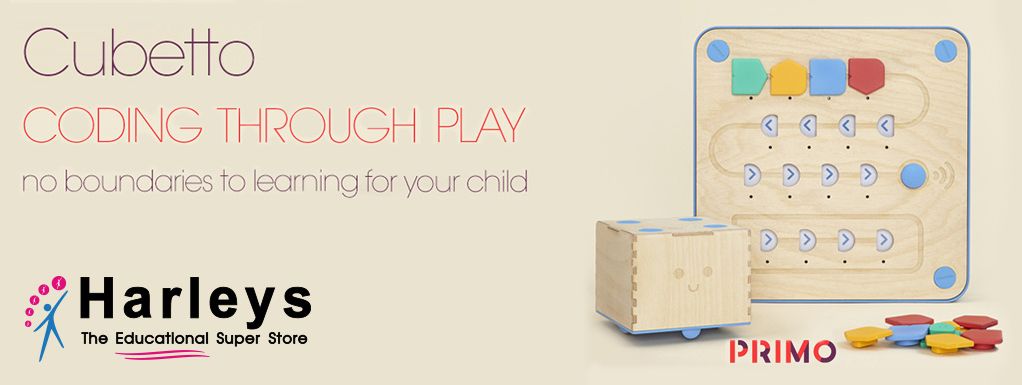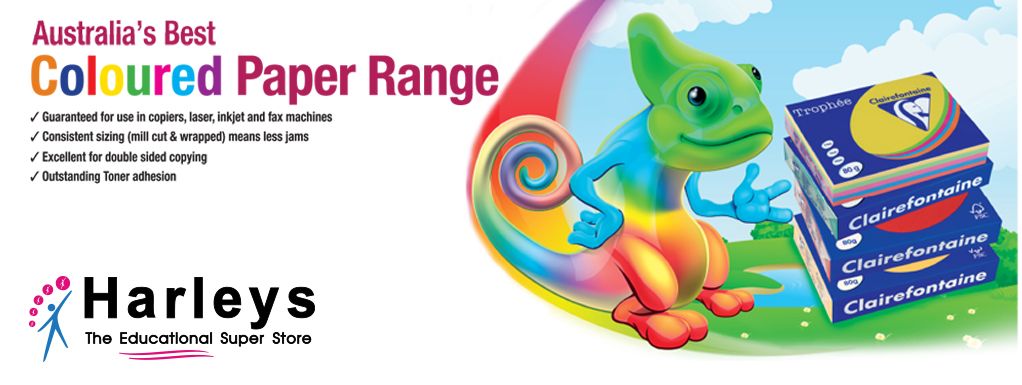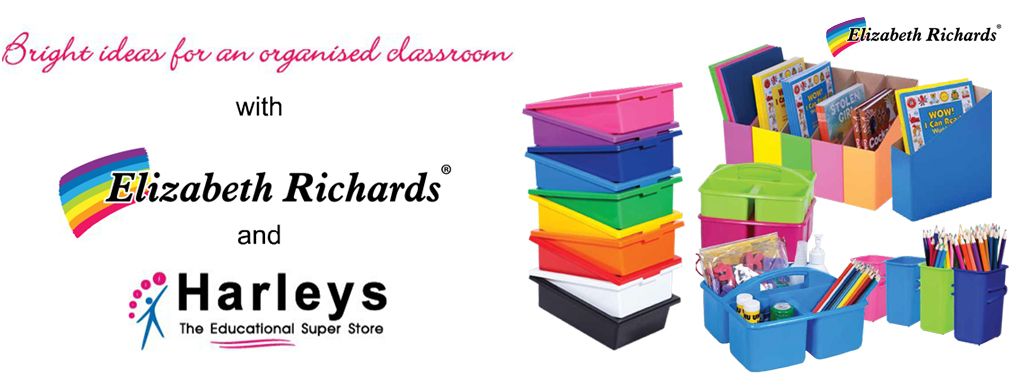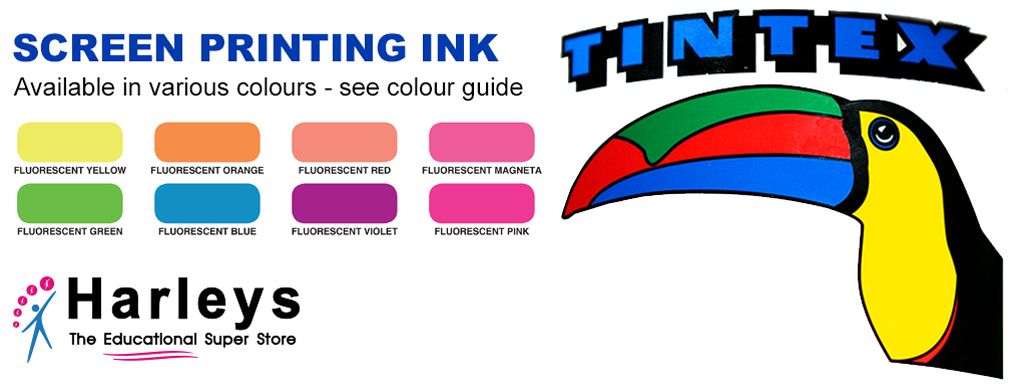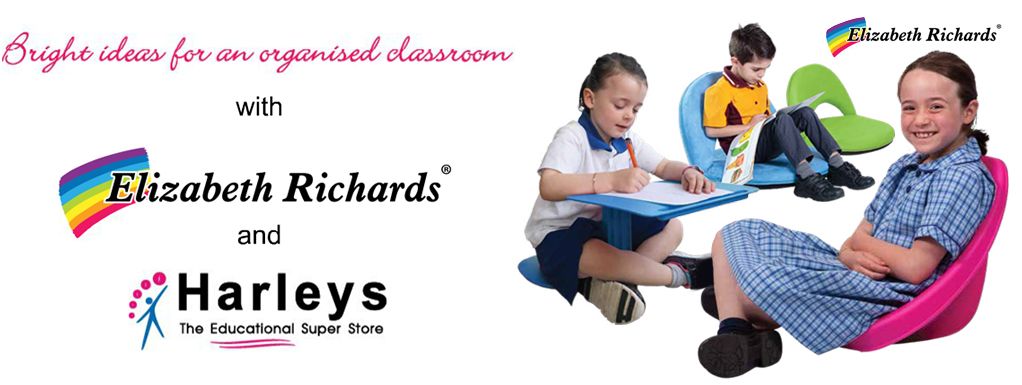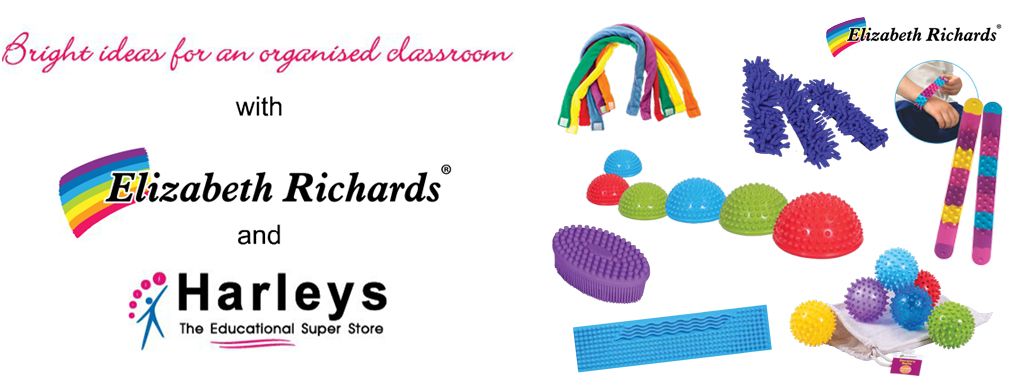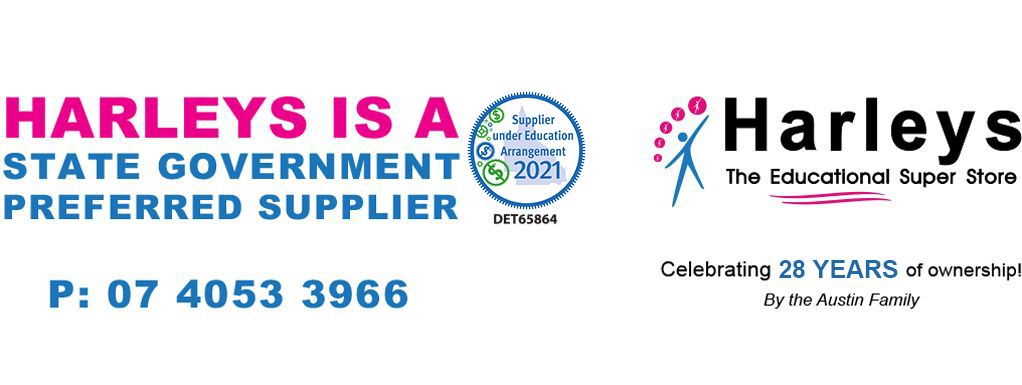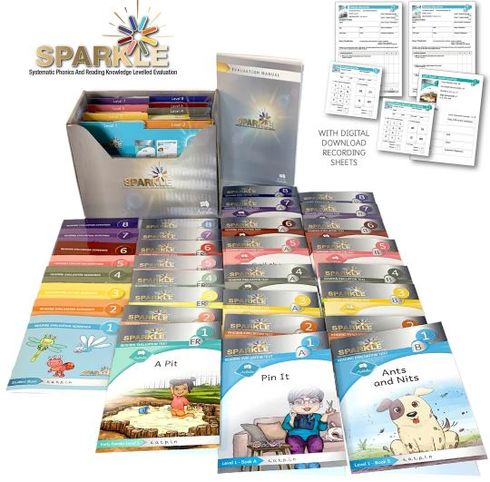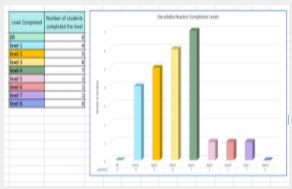The SPARKLE Kit can be used as a reading assessment tool regardless of the program being implemented.
The SPARKLE Kit is a testing series that has been created for teachers to evaluate and monitor the reading skills of their students. The SPARKLE Kit consists of 16 texts that assess decoding skills, text comprehension and fluency. Systematically sequenced into 8 levels, the SPARKLE Kit includes comprehensive student recording forms to assist teachers to accurately determine reading proficiency.
Individually administered, the student reading evaluation can be used for instructional planning purposes and to formulate interventions.
The SPARKLE Kit was predominantly designed as an assessment tool to be used alongside the Decodable Readers Australia Series 1 books. However, this resource is a tool that provides educators with a comprehensive report detailing the reading skills that a student has or has not acquired regardless of the instructional program used.
ALL students deserve the right to be taught to read using a Structured Literacy Approach.
The SPARKLE Kit was created in response to the growing problem of illiteracy in Australia. Significant gains have been made in drawing attention to the indisputable research that ALL students deserve the right to be taught to read using a structured literacy approach*.
Despite these gains, an unfathomable number of students continue to slip through their years of primary schooling only to be faced with an uncertain future shadowed by inferior literacy skills. Learning to read is a highly complex process. Consequently, teachers need to be adequately equipped with sophisticated tools that allow them to accurately and efficiently ascertain each individual student’s developmental reading progression.
*What is a structured literacy approach?
Structured Literacy is the umbrella term used by the International Dyslexia Association (IDA) to unify and encompass evidence-based programs and approaches that explicitly teach systematic word identification/ decoding strategies. These benefit most students and are vital for those with dyslexia.
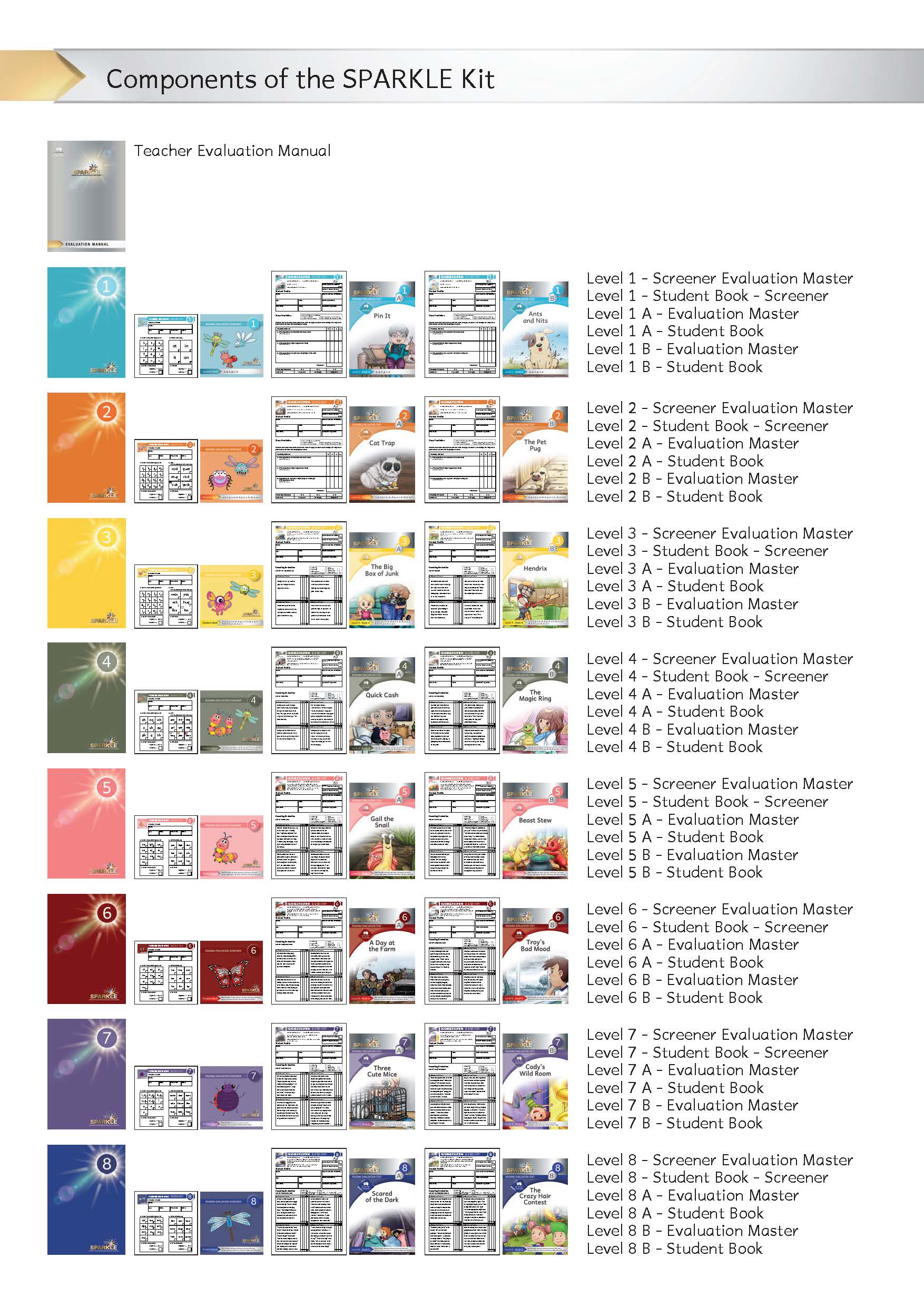
Screeners are used to briefly assess a particular skill in order to predict a later outcome. To be effective, the SPARKLE Kit screeners have been designed to assess skills developmentally.
Each level in the SPARKLE Kit includes a separate screener to be administered prior to the reading evaluation. The screener provides specific data regarding the student’s phonic knowledge and blending skills, that will indicate whether to proceed with administering the levelled text.
Each screener assesses:
- The student’s knowledge of the grapheme/phoneme correspondences of the new sounds introduced within the level
- The student’s ability to blend these sounds to read whole words that are comprised of various spelling patterns
- The student’s ability to read the sight words that are used within the levelled texts
Each screener from Levels 1-4 requires students to decode both real and nonsense (pseudo) words. Nonsense words are phonically decodable words that are not actual words with an associated meaning. The inclusion of these words in the screener allows for a true test of decoding to be undertaken.
Data obtained from the screener is used to determine if a student is ready to be evaluated using the levelled text. A Guide to Making Judgements will assist in determining a student’s reading readiness.
Nonsense words have been included in the screener to test a student’s ‘true’ decoding skills.
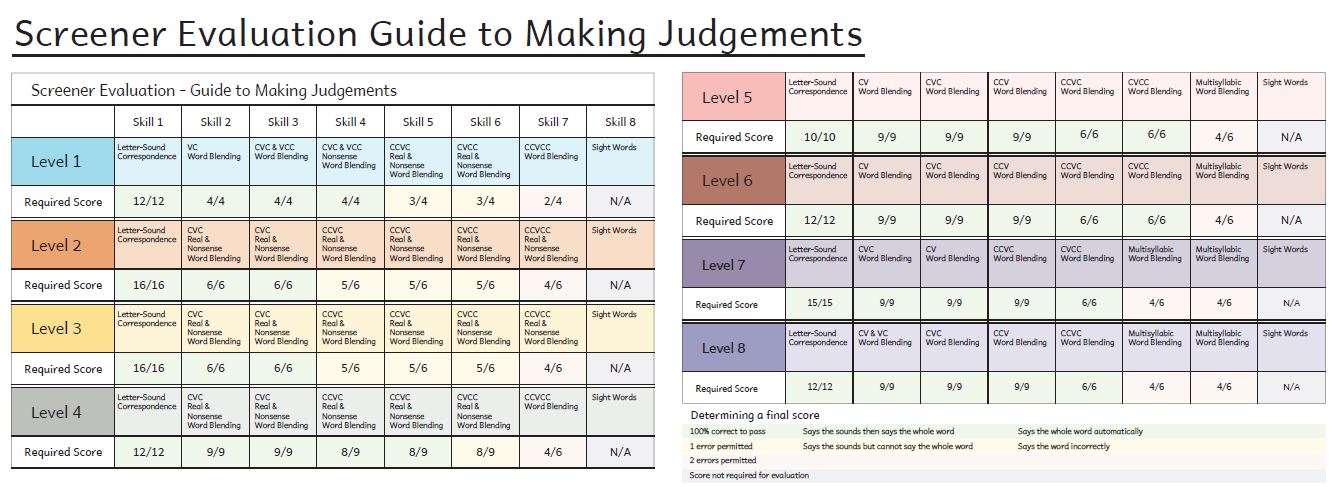
How Do I Collect Data Based On The SPARKLE Kit?
Decodable Readers Australia have created a FREE downloadable data recording tool using Excel. The package has embedded formulas to help analyse your data.
Download it here.
About the SPARKLE Kit Texts
Each of the SPARKLE Kit’s 16 original books have been purpose written as an assessment tool, solely for the contents of this resource. Each level in the SPARKLE Kit includes two fiction texts. The books are decodable, in that they contain words that are only constructed from the new sounds introduced in that level, and those from previous levels.
Two texts have been included in each level to allow a student to be evaluated at the same level, more than once, using an unseen text.
The two texts, within each level, are comparative in the following
ways.
- The approximate number of words in the text.
- The composition of the words in the text.
- For example – words that include the new sounds, various spelling patterns and multisyllabic words.
- The number and detailing of illustrations.
- The depth of the theme.
The Sparkle Kit includes only highly controlled, decodable texts that evaluate a systematic introduction of sounds.
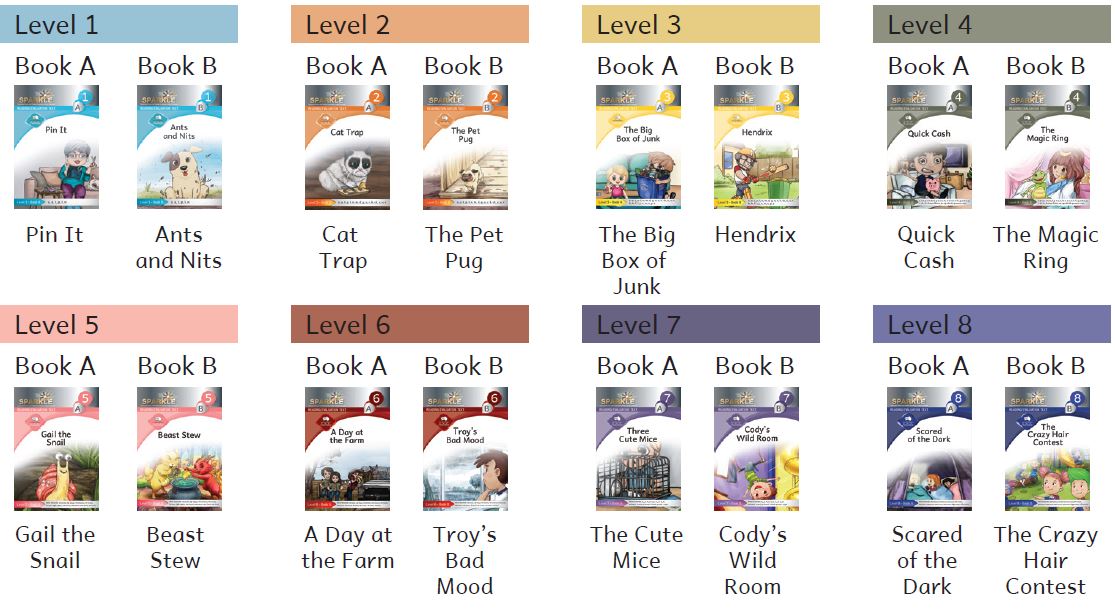
SPARKLE Kit Evaluation Recording Forms
Unlike other reading inventories, the SPARKLE Kit evaluation needs only to be administered when it appears evident that a student is ready to progress to the next set of sounds within the systematic, phonics program that they are following.
The recording forms provided within each level are a template on which specific data regarding the student’s decoding, comprehension and fluency skills can be documented. The reading data collected from the evaluation should be used to inform future instructional planning or to formulate intervention strategies.
Reading Response Table
Assessors should use the following reading response symbols to maintain consistency in data collection.
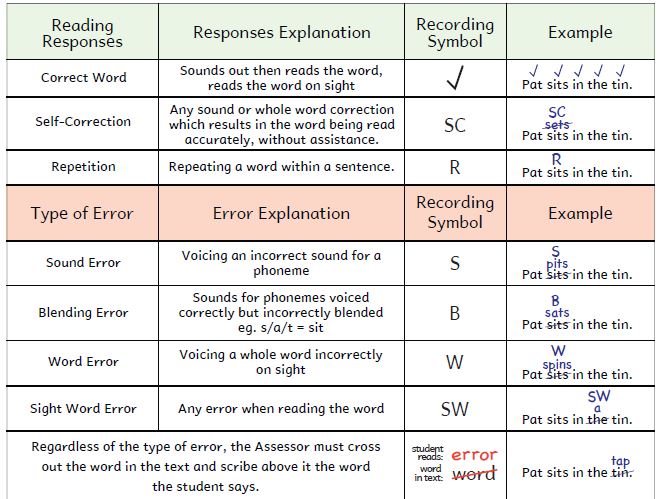
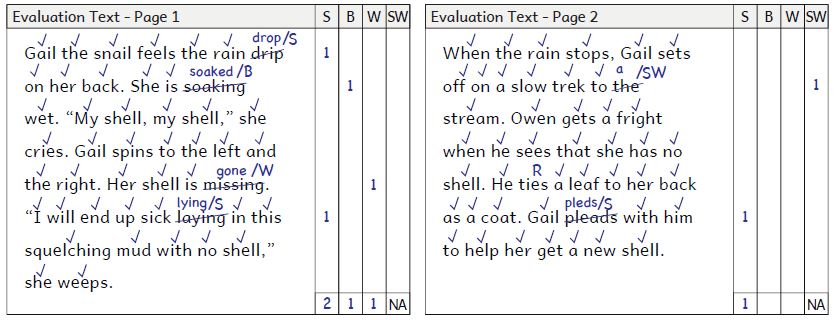
Levels 1 and 2 in the SPARKLE Kit assess the following 6 key areas of reading:
- Story prediction
- Decoding
- Story retell
- Literal comprehension
- Text-to-self comprehension
- Reading rate
Levels 3 - 8 in the SPARKLE Kit assess the following 6 key areas of reading:
- Decoding
- Story retell
- Literal comprehension
- Inferential comprehension
- Evaluative comprehension
- Reading rate
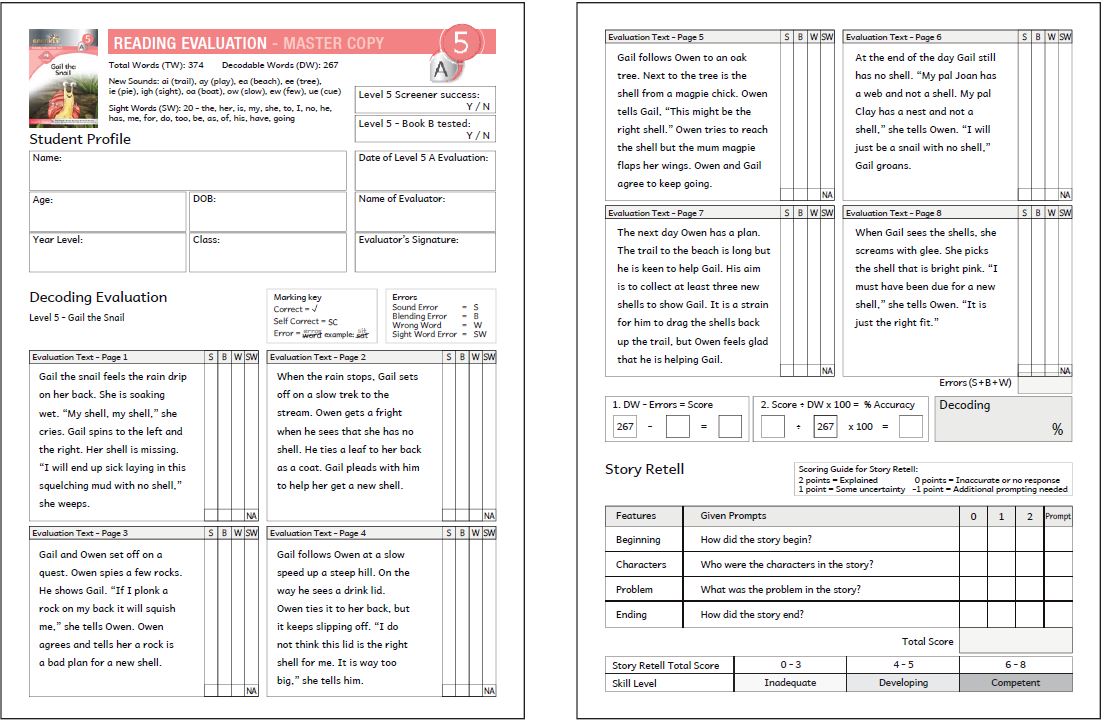
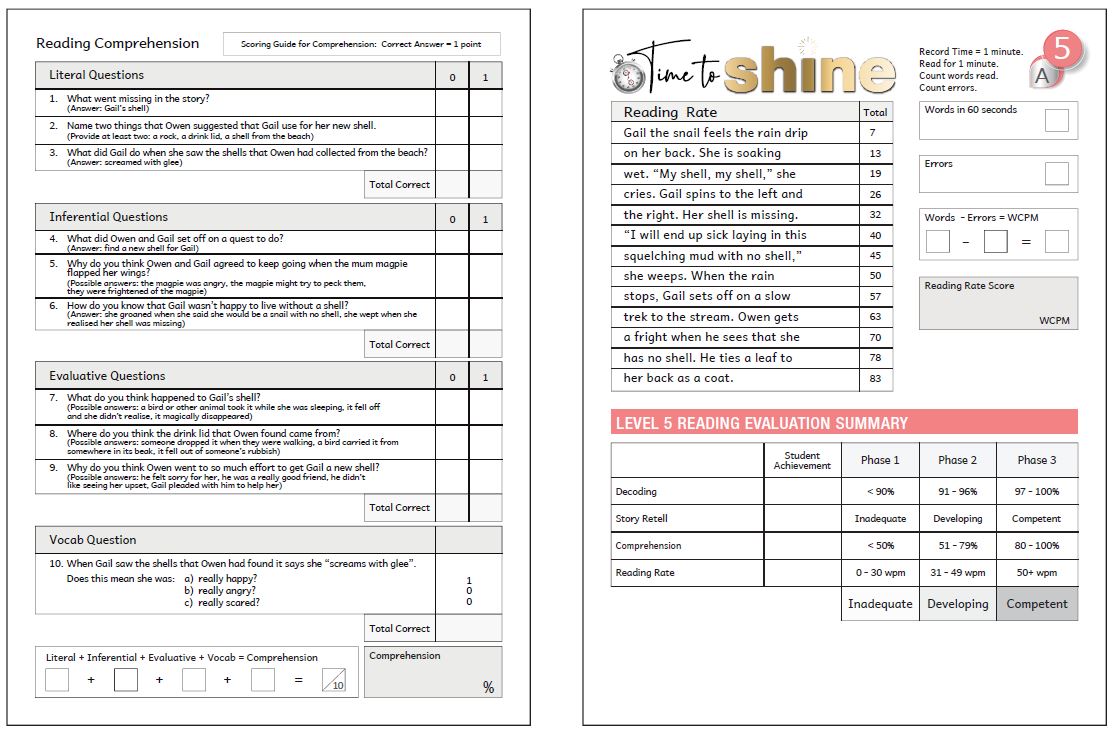
Intent of the SPARKLE Kit
Evaluating Decoding
Through the teaching of explicit phonics, students are taught the alphabetic principle of how to blend the sounds made by individual letters or combinations of letters into a whole word. This is the skill of decoding and is a critical component in early reading instruction. Being able to decode allows students to translate printed words into spoken language, giving them access to meaning.
It is imperative that students be taught the skills of decoding as early as possible. When students are skilled decoders, they have the capability to achieve reading comprehension that is equal to their language comprehension. The Simple View of Reading is a formula presented by Gough & Tunmer in 1986. All teachers of reading must have knowledge of this research in order to provide appropriate instruction.
Decoding is a teachable skill and when implemented systematically and explicitly, will lead to fast, accurate word recognition (Kamhi 2007). Consequently, it is essential to constantly and consistently check the decoding skills that a student has or has not acquired to adequately inform future instruction and/or intervention.
The SPARKLE Kit provides educators with a resource to accurately and sequentially assess and track the progress made by students as they embark on their journey of learning the English code.
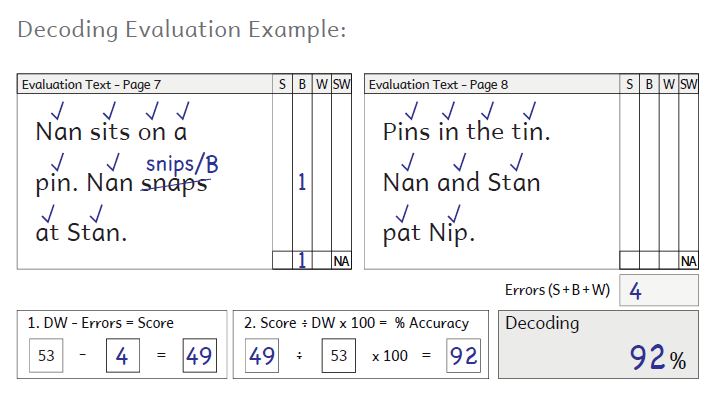
Evaluating Comprehension
Ultimately, the goal of reading is to be able to understand text. Reading comprehension necessitates more than just the identification of individual words. A student is not literate when they can decode. The ability to decode certainly permits a student to understand and gain experience with text, however there cannot be an imbalance between the ability to decode and that of understanding what the words mean (Farrell et al 2010).
The ability to derive meaning from spoken words, when they are part of text, constitutes the term language comprehension. Proficiency in language comprehension comes from acquiring knowledge. A student with excellent decoding skills will achieve reading comprehension equal to his/her language comprehension skills in the subject area being tested (Farrell et al 2010).
It is important to remember that comprehension is not a skill and is not easily taught. It involves complex higher-order mental processes that include thinking, reasoning, imagining and interpreting. These processes are dependent on having specific knowledge in a content area. This makes comprehension largely knowledge-based not skill based (Kamhi 2007).
The texts included within the SPARKLE Kit have been written using common age-appropriate themes, characters and ideas. Every attempt has been made to align the complexity of the story content to the predicted age of the reader. Consequently, if the development of decoding skills and language comprehension are comparable, the comprehension questions at each level should provide evidence of progression.
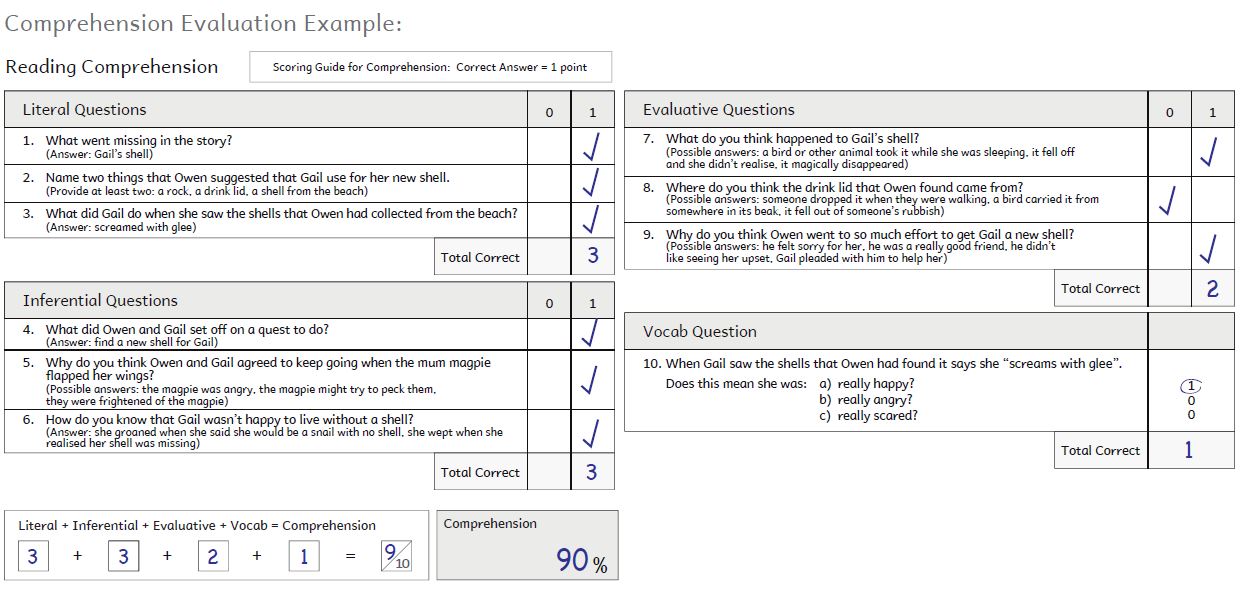
Evaluating Fluency
Fluency is being able to read text quickly, accurately and with expression (Konza 2011). Automaticity, on the other hand, is fast, effortless single word recognition. It is important to distinguish between these as they are often used interchangeably. To develop fluency, students must first acquire speed and accuracy in reading single words – automatic word identification. To become fluent, students must then be able to apply prosodic features such as rhythm, intonation and phrasing to their reading.
In the very early stages of reading development when students are learning to map speech to print, it is important to begin assessing automaticity. By measuring a student’s reading rate as they develop decoding skills, students learn that fast word recognition is a necessary skill associated with learning to read.
It is not enough for a student to be an accurate decoder. Failing to reach a sufficient level of automaticity and then fluency will result in inefficient reading skills. If the processes involved in identifying words don’t become automatized, students cannot free up enough cognitive space for higher comprehension processes (Konza 2011). Reading rates increase as students develop and become more proficient in whole word recognition. Consequently, target reading rates increase.
Within the SPARKLE Kit, reading rate guidelines have been set to evaluate the speed and accuracy in which students can read words. The table below provides a summary of reading rate expectations set out in the SPARKLE Kit texts.
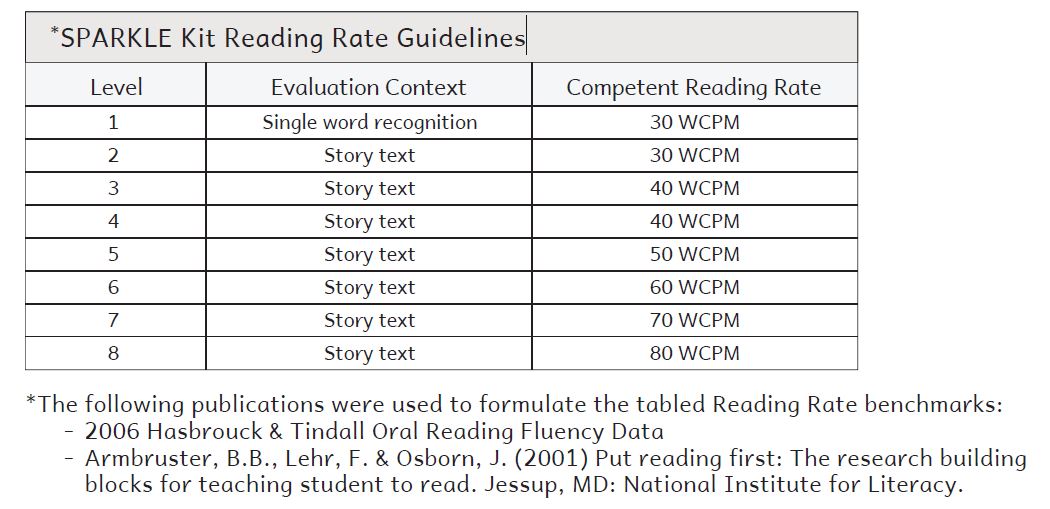
It is crucial that a balance is found between reading rate and prosody. Explicit instruction in reading fluency must ensure that students don’t see speed as the ultimate goal but that they can read text at a smooth pace that is well phrased and sounds like natural language.
Teaching Guidelines
The texts used in the SPARKLE Kit have been written using the same sequence of sounds as the beginner reading books in the Decodable Readers Australia - Main Fiction (Series 1).
The following diagram outlines the sounds that have been used to create the text at each level and consequently those that are evaluated.
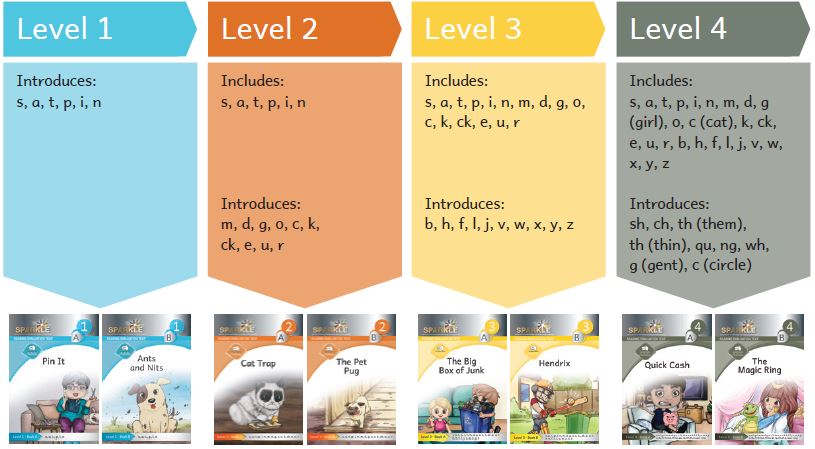
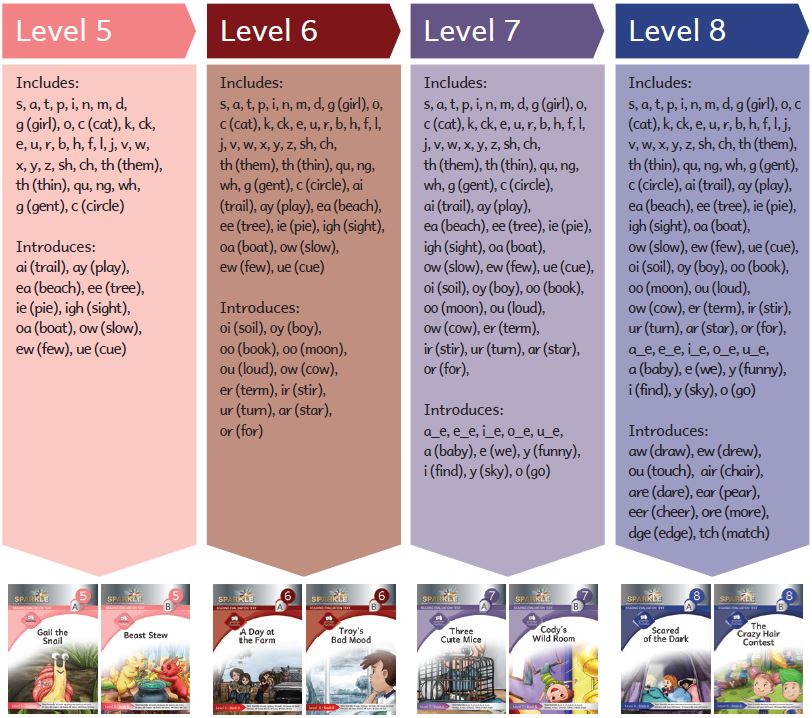
For schools and educators choosing to use the SPARKLE Kit alongside the Decodable Readers Australia – Series 1 books, the following table provides a guideline for the sequential implementation of both the readers and the evaluation tool.
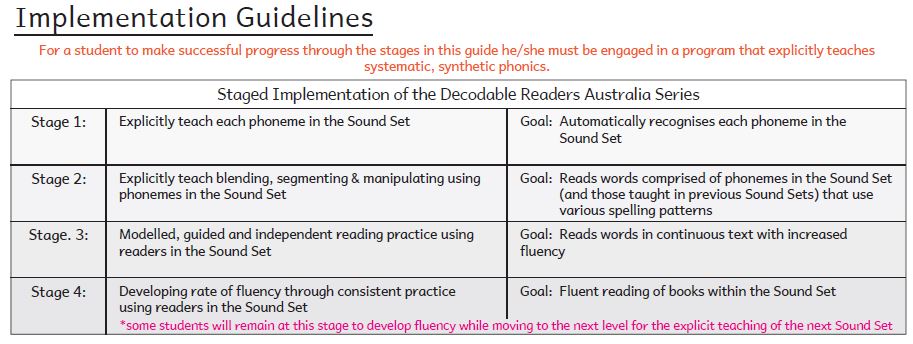
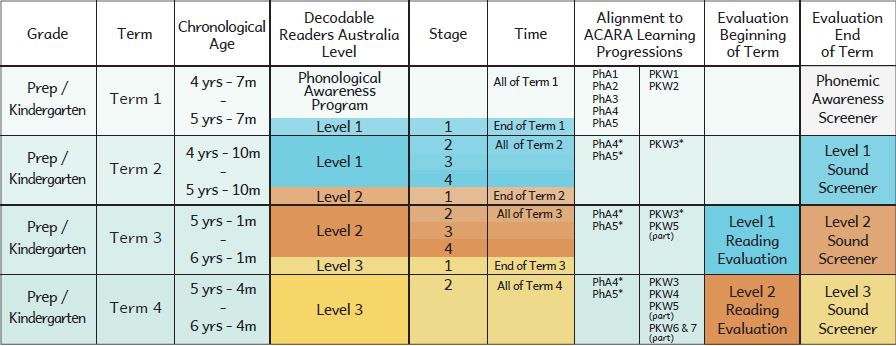
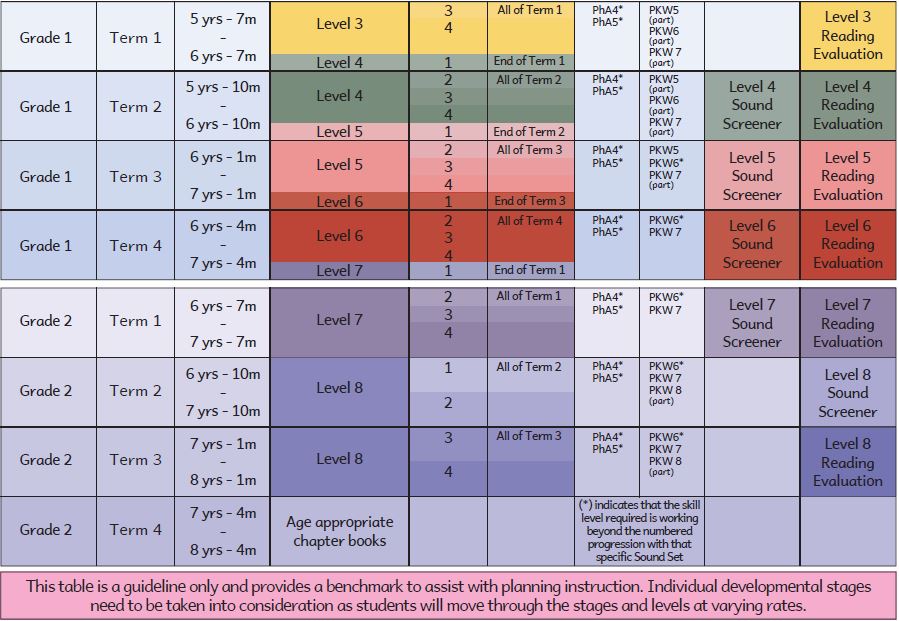
References:
- Kamhi, A. (2007) Knowledge deficits; the true crisis in education. ASHA Leader, 12(7), 28-29
- Gough, P. and Tunmer, W. (1986) Decoding, reading, and reading disability. Remedial and Special Education, 7, 6-10.
- Farrell, F., Davidson, M., Hunter, M. and Osenga, T. (2010) The Simple View of Reading; Research of importance to all educators. The Center for Development & Learning, Feb 1, pp1-14.
- Kamhi, A. (2007) Knowledge deficits; the true crisis in education. ASHA Leader, 12(7), 28-29.
- Konza, D. (2011) Fluency. Research into practice; Understanding the Reading Process. Department of Education and Children’s Services SA. Draft June 2011, pp1-6.
